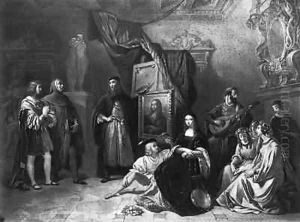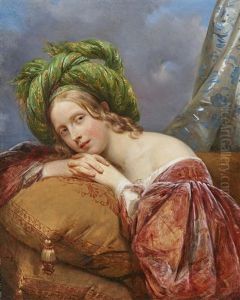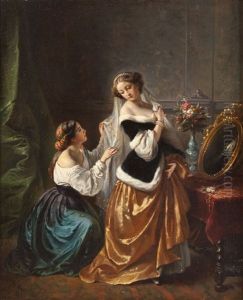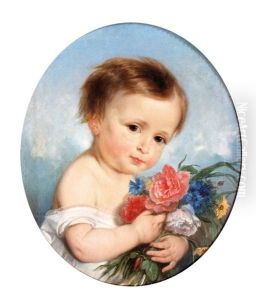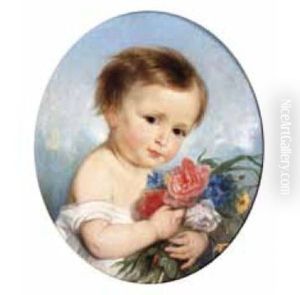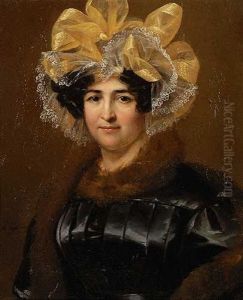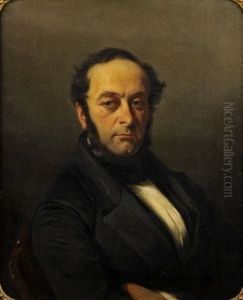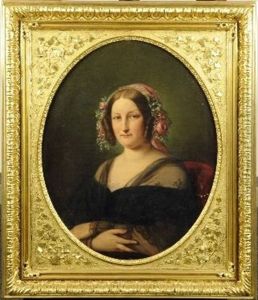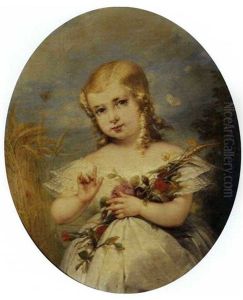Aimee Brune Paintings
Aimée Brune, born in 1822, was a distinguished French painter whose contributions to the world of art were memorable during the 19th century. She was married to the painter Philippe-Auguste Jeanron. Aimée Brune's life and work are emblematic of female artists' struggles and achievements in a period when the art world was predominantly male-dominated. Despite the societal constraints of her era, Brune managed to carve out a successful career for herself, which was no small feat for women at the time.
Aimée Brune specialized in portrait and genre painting, showcasing her talent in capturing the essence of her subjects with sensitivity and a delicate touch. Her work was recognized and appreciated in her lifetime, allowing her to gain a respectable place among her contemporaries. Brune's style was characterized by its elegance, attention to detail, and the emotional depth of her portraits, which often depicted women and children in intimate settings, reflecting the societal norms and expectations of her time.
Throughout her career, Aimée Brune actively participated in the art scene, contributing to various exhibitions. Her works were displayed in some of the most prestigious art venues of the time, including the Paris Salon, where she received accolades for her artistic achievements. Her paintings are now considered important examples of 19th-century French art, offering insight into the cultural and social dynamics of the period.
Despite the recognition she received, Aimée Brune, like many female artists of her era, is not as well-remembered today as some of her male counterparts. Efforts by art historians and feminists to reclaim the works and legacies of women artists have, however, led to a renewed interest in Brune's life and oeuvre. Today, her works are studied for their artistic merit as well as for what they reveal about the role of women in art and society during the 19th century.
Aimée Brune passed away in 1898, leaving behind a legacy that continues to inspire and resonate with audiences and artists alike. Her contributions to art are a testament to her skill, determination, and the subtle yet profound commentary she offered on the world around her through her paintings.
